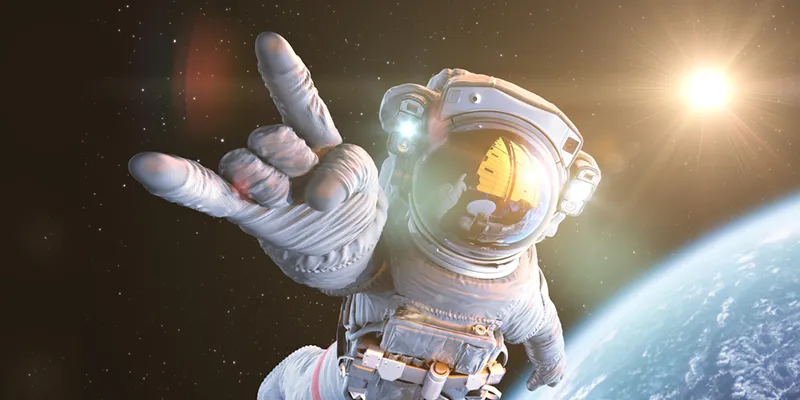What you can learn about social media marketing from NASA
There aren't many businesses or brands in the world that can rival NASA's social media game. While the stereotypical image of NASA employees is that of serious people wearing lab coats and discussing incomprehensible rocket science, the premier space organisation showed the world that it can form connections with even those people who have an aversion to science.

Image : shutterstock
Today, NASA boasts of over 120 million followers across all social media sites, on which it handles over 500 accounts. While you may think gaining such a massive following wasn't a particularly difficult task for NASA (after all, they're posting pictures about space, and who isn't interested in those, right?), the organisation put a ton of effort into making it happen.
In previous ecades, people only came to know about NASA's missions through regular print or TV media; and only the headline-worthy news was retained in their memories. But today's world has a voracious appetite for information. Almost every person with an internet connection is always online, spending their time looking at cat GIFs to following the latest news and everything in between. NASA leveraged this information thirst and created a stellar marketing strategy that skyrocketed the brand to the zenith of social media engagement. And even though NASA has no intentions of gaining monetary profit from their efforts, here are a few things you can learn from the space agency's social media strategy:
Educate and entertain
One thing that has boosted NASA's popularity on social media sites is their unexpected humour. As one of the foremost pioneers of technology in this century, no one could have faulted NASA if they had decided to adopt a serious and scientific tone for their social posts. But the company did what no one expected – they were funny. Using a first person voice peppered with witty phrases for their spacecraft deployed on extra-terrestrial missions, NASA brought a whole new dynamic to engaging audiences on social media.
The space agency has also taken to sharing the latest cosmic images, sent by its various spacecrafts, on Instagram even before they're released to the media. Since images of nebulas, galaxies, black holes, and the like are instant attention grabbers (a cursory look at their Instagram page will tell you what I'm on about), NASA capitalises on it by providing information about the cosmological entities which most people would otherwise have no interest in learning about. Astronaut Scott Kelly's regular posts during his year on board the International Space Station also proved to be a great hit on social media.
Tailor content for your audience
Relating with the vast young audience on the internet is a near-impossible task for most companies; but NASA is not one of them. Making frequent references to pop culture and the latest memes trending on the internet, NASA educates their audience in a witty and engaging manner. The twitter handles for the spacecraft deployed on NASA's extra-terrestrial missions, like the Juno Mission to Jupiter and the Curiosity Rover to Mars, often reference popular internet lingo like ‘deal with it’ and ‘selfie game’ to provide an entertaining twist to the information being shared.
NASA is also active on virtually every social media site on the internet. But what's interesting to see is how they tailor their content to cater to the specific audiences found on each site. For example, on Tumblr and Snapchat (both of which have a relatively young audience), NASA accounts avoid scientific jargon and keep their posts entertaining. However, on Twitter and Reddit, users of which are more inclined to be interested in the science behind space travel, NASA doesn't shy away from sharing detailed informative posts.
Engage people
The importance of influencers in social media marketing cannot be overstated. If credible influencers broadcast your information to their audience, you've effectively boosted social media reach without any additional spending. NASA understood the importance of this marketing tactic and proceeded to develop an entire community to foster connections with influencers.
The program, which is called NASA Social, urges NASA's followers to share information about the agency's missions and programs on social media. As an incentive, NASA offers a select group of competent influencers a behind-the-scenes tour of their facilities during which they can interact with the agency's engineers, scientists, and astronauts. NASA has also created social media accounts dedicated to the Social program which showcase influencers’ visits to NASA centres and their interactions with the people working there.
Of course, NASA's social media strategy benefitted a great deal from the agency being a household name before they began marketing themselves. But that doesn't mean that you can't learn a thing or two from how they went about increasing the number of their online followers at an exponential rate in a very short period of time.







